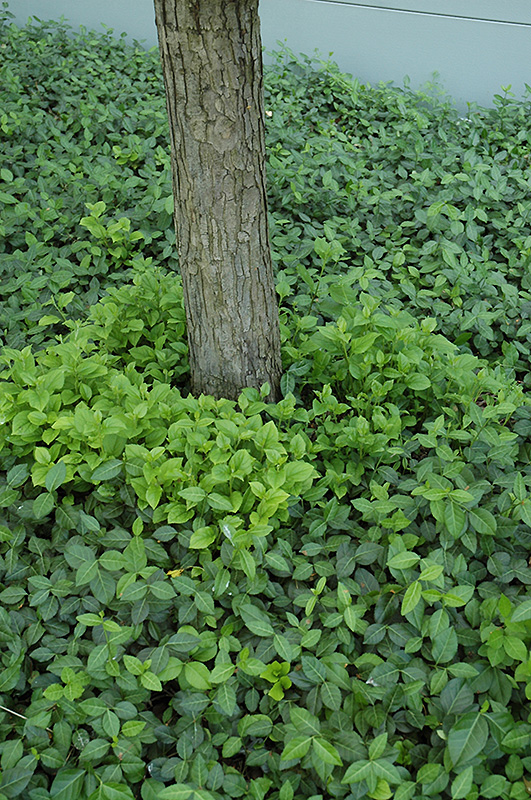Plant Search
Vegetus Wintercreeper
Euonymus fortunei 'Vegetus'
Height: 3 feet
Spread: 6 feet
Sunlight:
![]()
![]()
![]()
Hardiness Zone: 4b
Other Names: Wintercreeper Euonymus
Description:
A sprawling broadleaf evergreen vine or mounded shrub for almost any screening or garden application, notably hardier than other varieties of this species; shiny dark green leaves and showy orange fruit in fall, can be trained to climb tall trees
Ornamental Features
Vegetus Wintercreeper is primarily grown for its highly ornamental fruit. It features abundant showy pink capsules from mid to late fall. It has dark green evergreen foliage. The glossy oval leaves remain dark green throughout the winter.
Landscape Attributes
Vegetus Wintercreeper is a multi-stemmed evergreen shrub with a ground-hugging habit of growth. Its average texture blends into the landscape, but can be balanced by one or two finer or coarser trees or shrubs for an effective composition.
This shrub will require occasional maintenance and upkeep, and can be pruned at anytime. Gardeners should be aware of the following characteristic(s) that may warrant special consideration;
- Insects
Vegetus Wintercreeper is recommended for the following landscape applications;
- Mass Planting
- Hedges/Screening
- General Garden Use
- Groundcover
Planting & Growing
Vegetus Wintercreeper will grow to be about 3 feet tall at maturity, with a spread of 6 feet. It tends to fill out right to the ground and therefore doesn't necessarily require facer plants in front. It grows at a medium rate, and under ideal conditions can be expected to live for approximately 30 years.
This shrub performs well in both full sun and full shade. It is very adaptable to both dry and moist locations, and should do just fine under typical garden conditions. It is not particular as to soil type or pH. It is highly tolerant of urban pollution and will even thrive in inner city environments. This is a selected variety of a species not originally from North America.
A NetPS Plant Finder tool


